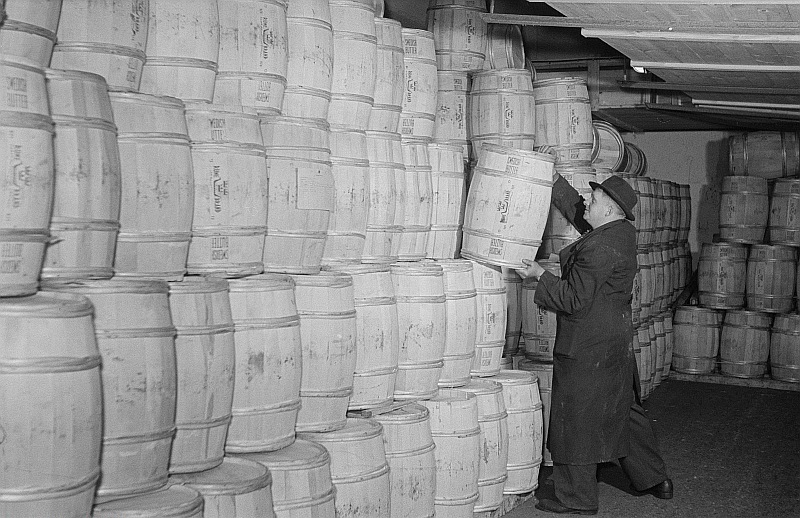butter mountain on:
[Wikipedia]
[Google]
[Amazon]
 The butter mountain is a supply surplus of
The butter mountain is a supply surplus of
 The butter mountain is a supply surplus of
The butter mountain is a supply surplus of butter
Butter is a dairy product made from the fat and protein components of churned cream. It is a semi-solid emulsion at room temperature, consisting of approximately 80% butterfat. It is used at room temperature as a spread, melted as a condiment ...
produced in the European Union
The European Union (EU) is a supranational political and economic union of member states that are located primarily in Europe. The union has a total area of and an estimated total population of about 447million. The EU has often been des ...
because of government interventionism that began in the 1970s. The size of the surplus changed significantly over time and mostly disappeared by 2017, which has led to shortages. Other surpluses were described as ''beef mountains'', ''milk lakes'', ''wine lake
The wine lake refers to a perceived overproduction of wine in the European Union, particularly around 2005–2007. The EU's Common Agricultural Policy contained a number of subsidies for wine producers, leading to a supply glut; this surplus forc ...
s'' and ''grain mountains''.
Excesses existed because the agricultural policies were designed to stabilize prices for farmers and consumers and to ensure that there was enough produce at all times, but production varied from year to year, so in most years there was an excess. Excesses were often sold off cheaply either within the EU or to other markets.
History
Agricultural underproduction in the 1950s led to a series of market interventions, including theCommon Agricultural Policy
The Common Agricultural Policy (CAP) is the agricultural policy of the European Union. It implements a system of agricultural subsidies and other programmes. It was introduced in 1962 and has since then undergone several changes to reduce the ...
. Governments subsidized milk production by a guaranteed minimum intervention price In agricultural policy, the intervention price is the price at which national intervention agencies in the EU are obliged to purchase any amount of a commodity offered to them regardless of the level of market prices (assuming that these commodities ...
for dairy
A dairy is a business enterprise established for the harvesting or processing (or both) of animal milk – mostly from cows or buffaloes, but also from goats, sheep, horses, or camels – for human consumption. A dairy is typically located on ...
products. This led to a surge in the production of grain, milk, butter and related products until production exceeded demand in the late 1970s, resulting in a glut. Milk production in West Germany alone increased from 75 million tonnes in 1960 to nearly 100 million tonnes by 1979. To combat the overproduction
In economics, overproduction, oversupply, excess of supply or glut refers to excess of supply over demand of products being offered to the market. This leads to lower prices and/or unsold goods along with the possibility of unemployment.
The de ...
, governments introduced milk quota
Milk is a white liquid food produced by the mammary glands of mammals. It is the primary source of nutrition for young mammals (including breastfed human infants) before they are able to digest solid food. Immune factors and immune-modulating ...
s, which were governed by the Common Agricultural Policy
The Common Agricultural Policy (CAP) is the agricultural policy of the European Union. It implements a system of agricultural subsidies and other programmes. It was introduced in 1962 and has since then undergone several changes to reduce the ...
.
In the following decades, production continued to outstrip demand, and the European governments and later the European Union
The European Union (EU) is a supranational political and economic union of member states that are located primarily in Europe. The union has a total area of and an estimated total population of about 447million. The EU has often been des ...
would purchase tonnes of the surplus agricultural goods, creating so-called "milk lakes" and "butter" or "beef mountains".
"Christmas butter"
InWest Germany
West Germany is the colloquial term used to indicate the Federal Republic of Germany (FRG; german: Bundesrepublik Deutschland , BRD) between its formation on 23 May 1949 and the German reunification through the accession of East Germany on 3 O ...
, between 1979 and 1985, excess butter was sold at discounted prices under the direction of the Federal Ministry for Food, Agriculture and Forests and was limited to per household. The packages were labelled as being the product of intervention stockpiles and were specifically intended to reduce that oversupply.
Decline
In 2003, it was reported that the EU warehoused 194,000 tonnes ofpowdered milk
Powdered milk, also called milk powder, dried milk, or dry milk, is a manufactured dairy product made by evaporating milk to dryness. One purpose of drying milk is to preserve it; milk powder has a far longer shelf life than liquid milk and do ...
and 223,000 tonnes of butter. In 2007, rising demand and planned reforms were forecast to eliminate the oversupply of milk and butter eventually. By 2009, the butter mountain had returned because of a steep decline in the price of dairy products. In 2017, it was reported that European butter stockpiles had largely disappeared because of increased demand and dwindling production, which caused shortages and rising prices.
See also
*Government cheese
Government cheese is processed cheese provided to welfare beneficiaries, Food Stamp recipients, and the elderly receiving Social Security in the United States, as well as to food banks and churches. This processed cheese was used in military ki ...
* Wine lake
The wine lake refers to a perceived overproduction of wine in the European Union, particularly around 2005–2007. The EU's Common Agricultural Policy contained a number of subsidies for wine producers, leading to a supply glut; this surplus forc ...
References
{{Butter Butter Economy of the European Union European Union and agriculture